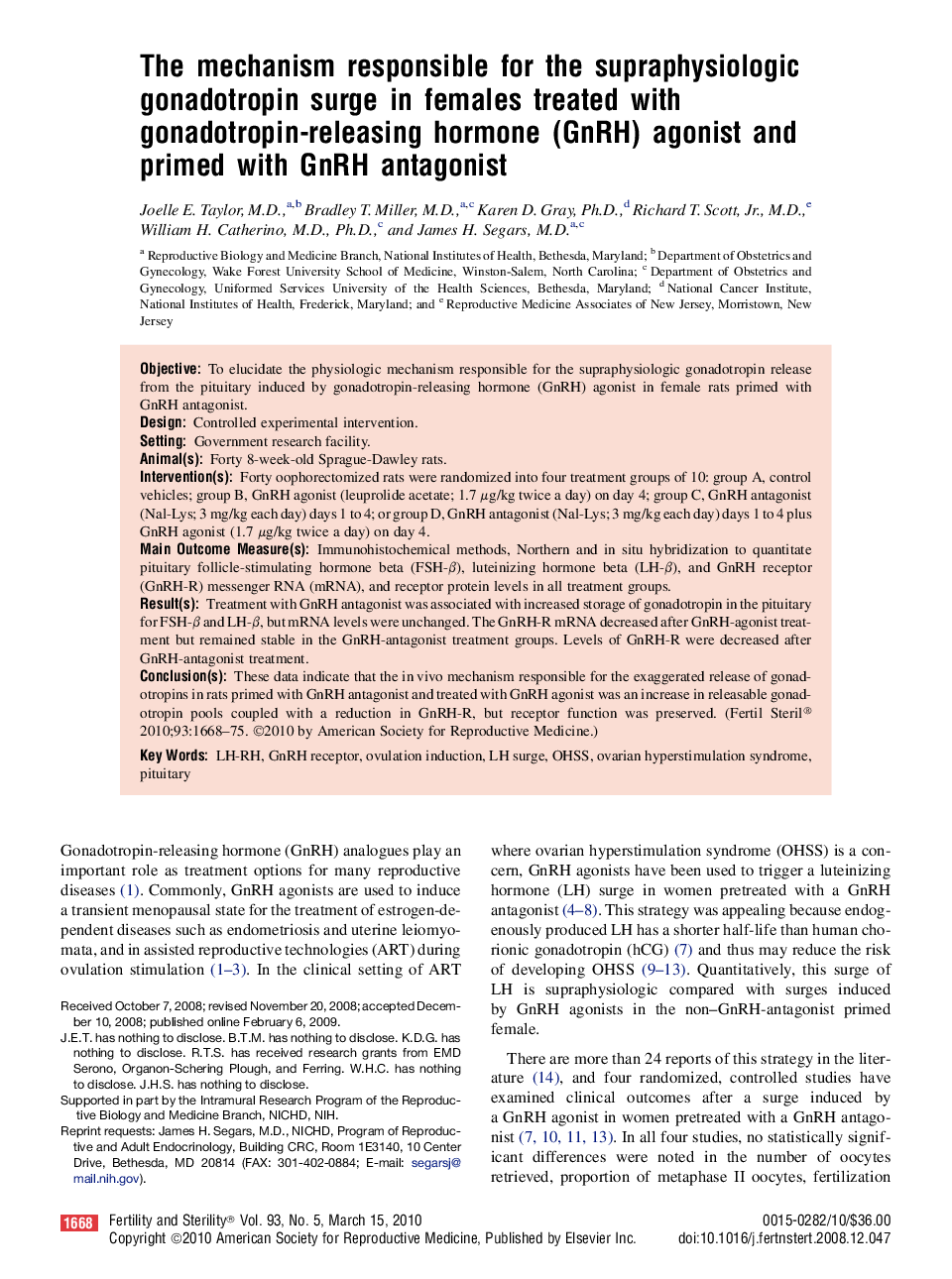| Article ID | Journal | Published Year | Pages | File Type |
|---|---|---|---|---|
| 3938248 | Fertility and Sterility | 2010 | 8 Pages |
ObjectiveTo elucidate the physiologic mechanism responsible for the supraphysiologic gonadotropin release from the pituitary induced by gonadotropin-releasing hormone (GnRH) agonist in female rats primed with GnRH antagonist.DesignControlled experimental intervention.SettingGovernment research facility.Animal(s)Forty 8-week-old Sprague-Dawley rats.Intervention(s)Forty oophorectomized rats were randomized into four treatment groups of 10: group A, control vehicles; group B, GnRH agonist (leuprolide acetate; 1.7 μg/kg twice a day) on day 4; group C, GnRH antagonist (Nal-Lys; 3 mg/kg each day) days 1 to 4; or group D, GnRH antagonist (Nal-Lys; 3 mg/kg each day) days 1 to 4 plus GnRH agonist (1.7 μg/kg twice a day) on day 4.Main Outcome Measure(s)Immunohistochemical methods, Northern and in situ hybridization to quantitate pituitary follicle-stimulating hormone beta (FSH-β), luteinizing hormone beta (LH-β), and GnRH receptor (GnRH-R) messenger RNA (mRNA), and receptor protein levels in all treatment groups.Result(s)Treatment with GnRH antagonist was associated with increased storage of gonadotropin in the pituitary for FSH-β and LH-β, but mRNA levels were unchanged. The GnRH-R mRNA decreased after GnRH-agonist treatment but remained stable in the GnRH-antagonist treatment groups. Levels of GnRH-R were decreased after GnRH-antagonist treatment.Conclusion(s)These data indicate that the in vivo mechanism responsible for the exaggerated release of gonadotropins in rats primed with GnRH antagonist and treated with GnRH agonist was an increase in releasable gonadotropin pools coupled with a reduction in GnRH-R, but receptor function was preserved.
